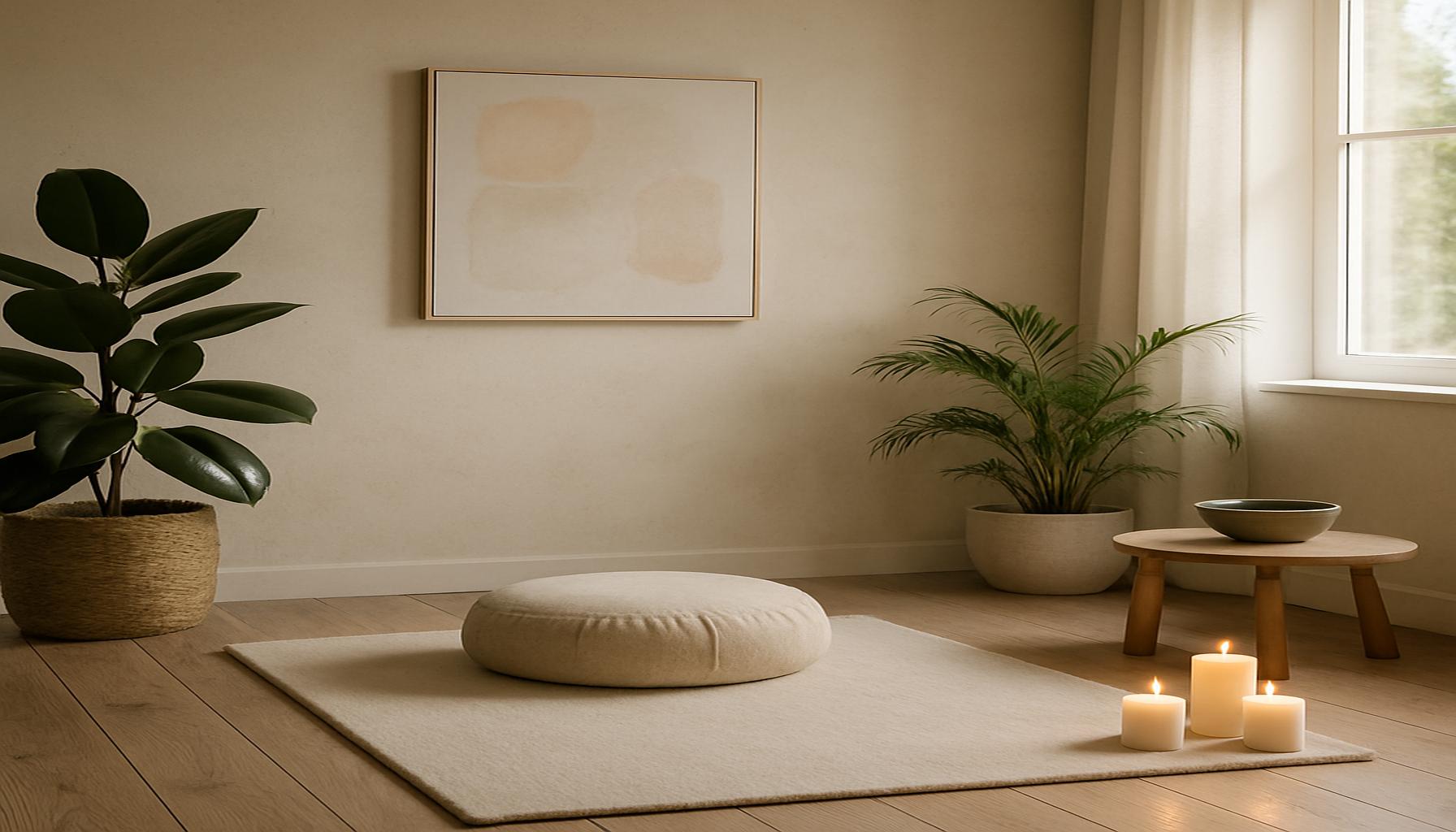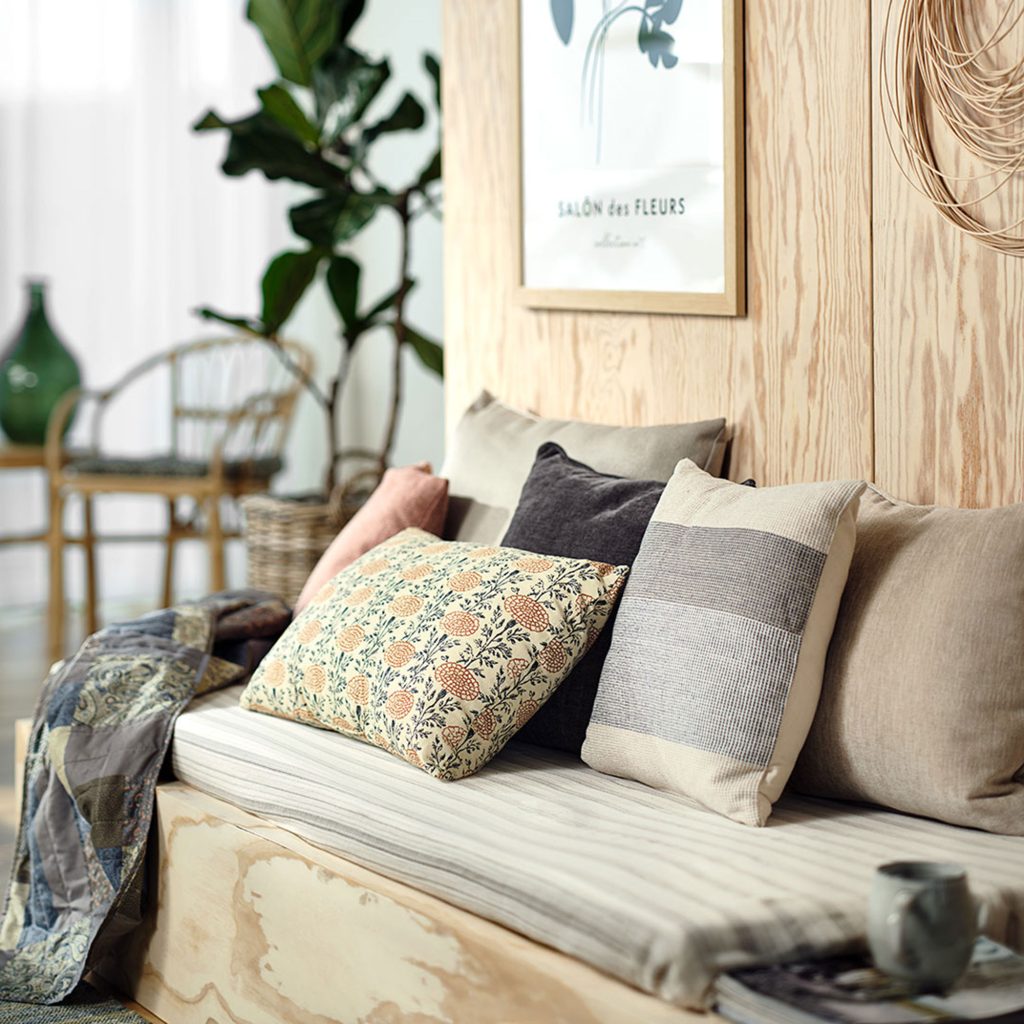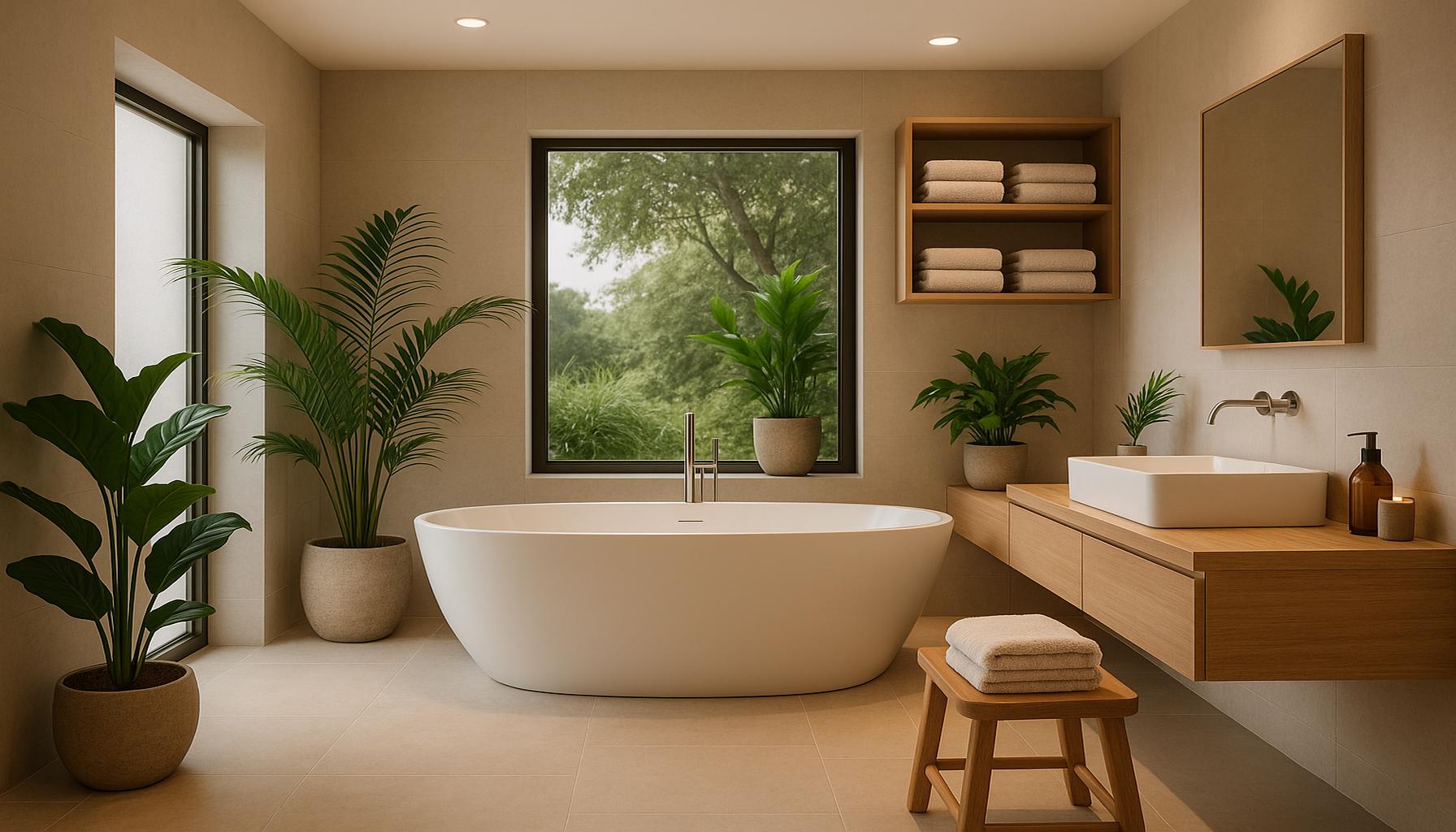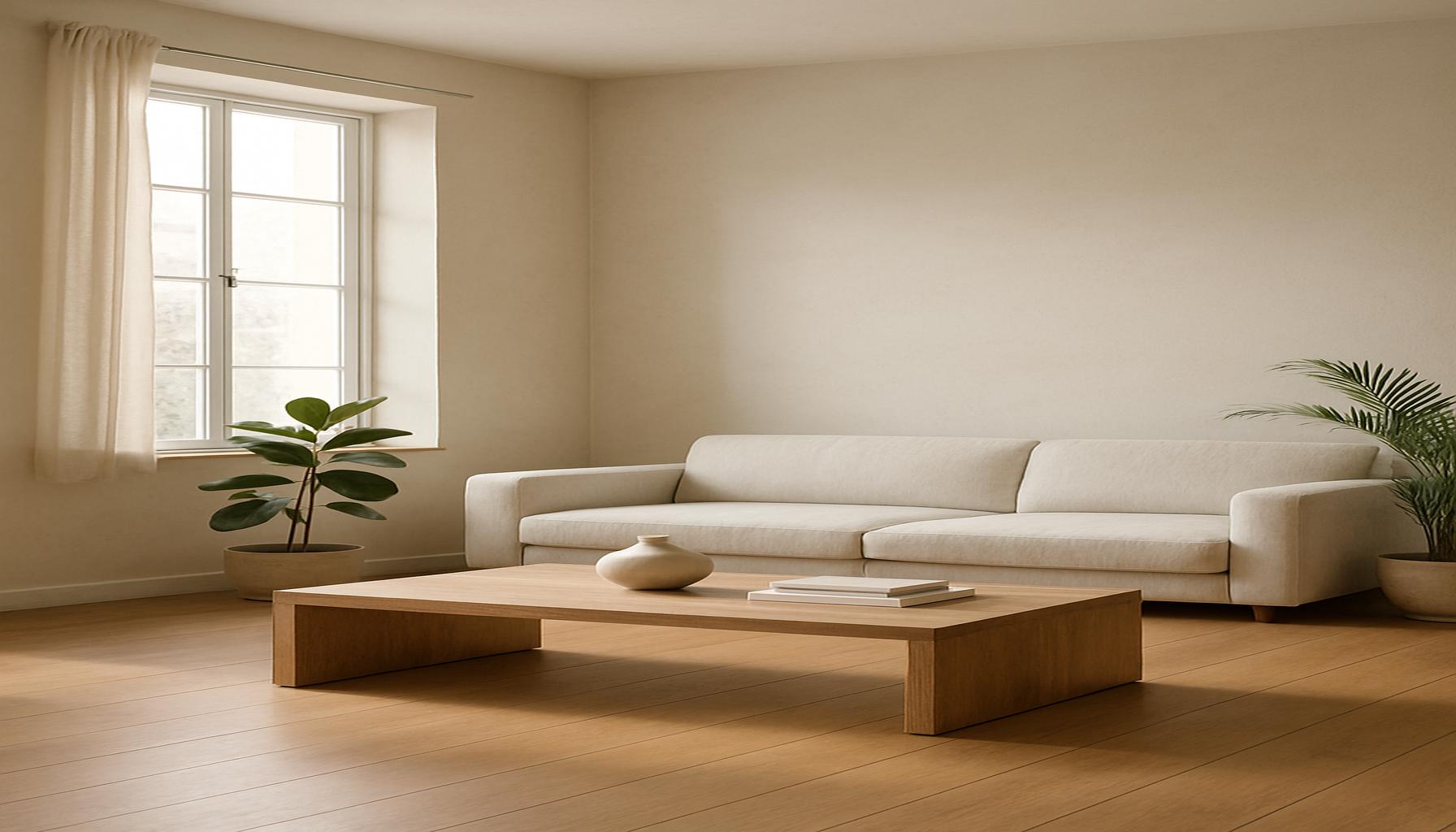Minimalist Meditation Spaces: How to Organize an Environment for Mindfulness Practice

Creating Your Sanctuary for Mindfulness
In the chaos of modern life, finding solace can seem like a daunting task. The physical manifestation of tranquility often begins with our environment. By adopting the principles of minimalism, we can transform any corner of our home into a sanctuary that promotes meditation and self-reflection. This not only serves as a refuge from daily stressors but can also enhance our overall mental well-being.
Key Components of a Minimalist Meditation Space
Here are some essential elements to consider when crafting your minimalistic meditation space:
- Declutter: Begin by removing unnecessary items that contribute to visual clutter. Think about a room—how does it feel with stacks of mail, old magazines, and extraneous decorations scattered around? A clean space promotes a clear mind. Consider using storage solutions such as boxes or baskets to keep the essentials within reach while maintaining a tidy appearance.
- Natural Elements: Incorporating elements from nature can significantly enhance your connection to the world around you. Adding plants can improve air quality and introduce softness to your space. For instance, small potted succulents or vibrant peace lilies not only bring color but also require minimal maintenance, making them ideal for busy lives. Additionally, using materials like bamboo, stone, or wood can enrich the sensory experience of your sanctuary, creating an organic feel that evokes calmness.
- Comfortable Seating: Regardless of the size of your space, prioritize comfortable seating options. Simple cushions or yoga mats provide support and comfort, allowing you to focus on your practice rather than discomfort. Consider investing in a meditation bench for added relaxation. Ergonomic seating encourages proper posture, essential for longer meditation sessions.
Creating an environment conducive to relaxation goes beyond mere aesthetics; it fundamentally sets the tone for your practice. Research supports the idea that a thoughtfully organized space improves focus and tranquility, allowing for deeper mindfulness sessions. For instance, a study published in the Journal of Environmental Psychology showed that individuals who practiced meditation in serene, uncluttered environments were more likely to feel centered and focused. This suggests that the physical space directly influences mental clarity.
Whether you dedicate a full room or simply a cozy corner to your practice, nurturing a sense of peace is paramount. As you experiment with different styles and elements, be mindful of how each choice affects your inner calm. The journey to creating a minimalist sanctuary may not only enhance your meditation experience but inspire you to integrate mindfulness more deeply into your daily life. You may find that the principles of minimalism seep into other areas, encouraging you to live with intention and presence.
DISCOVER MORE: Click here to learn about living simply

Essential Strategies for a Mindful Space
Establishing a minimalist meditation space requires more than just removing unnecessary items from view; it involves a holistic approach that fosters serenity and focus. In this pursuit, various elements work in harmony to create an atmosphere conducive to mindfulness practice. Below are some strategic actions you can take to ensure your meditation environment resonates with peace and simplicity:
- Mindful Color Palette: The colors you choose for your meditation space can drastically influence your mood and state of mind. Soft, neutral tones such as whites, light greys, and pastel blues establish a sense of calm. These colors mimic the calming aspects of nature, promoting tranquility. In contrast, loud or extremely bright colors may serve to distract and heighten anxiety. When selecting paint swatches or decorative elements, opt for hues that are subtle and nature-inspired.
- Lighting Considerations: Natural light plays a crucial role in shaping the atmosphere of your meditation space. Whenever possible, choose a location with ample daylight to enhance your mood and bolster the calming energy of the environment. However, soft lighting options, such as string lights or dimmable lamps, can create a cozy atmosphere for evening sessions. Avoid harsh fluorescent lighting; warm, ambient light encourages relaxation and introspection.
- Sound Environment: Sound can both distract and enhance meditation. Aim for a quiet, peaceful environment, reducing unwanted noise to the best of your ability. Consider incorporating sound elements that promote calmness—soft music, the gentle ticking of a clock, or even nature sounds such as water flowing or birds singing. You may also choose to use sound-blocking materials like rugs or curtains to absorb unwanted noise from the outside world.
- Personal Touch: While the essence of minimalism is simplicity, adding a few personal or sentimental items can provide emotional grounding. A beautifully crafted bowl, a meaningful photograph, or a favorite book can serve as focal points, inspiring reflection. Ensure that these items contribute positively to the space without overwhelming it. Each chosen element should resonate with your journey of mindfulness and self-discovery.
By thoughtfully considering these strategies, you are not only curating a visually appealing atmosphere but also building a nurturing space that honors your meditation practice. Convenience plays an important role in creating a positive experience. For example, having your meditation supplies, such as cushions, candles, and journals close at hand, eliminates distractions and promotes a seamless transition into your practice. Research shows that a dedicated space specifically for mindfulness enhances commitment and makes meditation a more integral part of daily life.
As you carve out your meditation sanctuary, remember that the ultimate goal is to create a space that reflects your personal essence and aids in cultivating mindfulness. By connecting more deeply with your environment, you embark on a transformative journey. Adapting these principles can lead to profound shifts in your approach to meditation—inviting peace, presence, and clarity into every moment.
Creating Your Minimalist Meditation Space
To truly embrace the art of mindfulness, it is essential to set up a minimalist meditation space that promotes tranquility and focus. The first step is to select a location within your home that feels naturally calming. This space should be free from distractions, allowing for deep reflection and immersion into your meditation practice. Ensure that it is well-lit, preferably with natural light, as this can significantly enhance the ambiance.Next, consider the color palette of the area. Soft and neutral tones can foster a sense of peace and harmony, which are crucial for meditation. Paint the walls in these soothing colors or use intentional decor items that align with this aesthetic.When it comes to furnishings, less is more. Opt for a comfortable cushion or mat, as physical comfort can greatly enhance your ability to meditate effectively. You may also want to include a low table for essential items, such as candles or incense, which can help to create an inviting atmosphere. Incorporating elements of nature can also elevate your meditation environment. Plants not only purify the air but also bring life and a connection to the earth into your practice. Consider the placement of these natural elements to maintain simplicity without overcrowding your space.Lastly, it’s vital to establish a regular routine within this space. Consistency will condition your mind to recognize this place as your sanctuary for mindfulness practice. Set specific times of the day for your meditation to help reinforce this habit.By following these guidelines, anyone can craft a personal minimalist meditation space that nurtures mindfulness and cultivates inner peace. The benefits of such an environment extend not just to your meditation practice but to your overall well-being, fostering a lifestyle centered around mindfulness and awareness.
| Advantage | Description |
|---|---|
| Enhanced Focus | A minimalist environment reduces distractions, promoting deeper concentration during meditation. |
| Promotes Tranquility | Simplified surroundings cultivate a peaceful ambiance conducive to mindfulness practice. |
These principles, rooted in minimalism, are foundational in creating a space that not only facilitates meditation but also becomes a sanctuary for personal growth and awareness. To explore more nuances and attain a fuller understanding of how to refine your minimalist meditation space, consider diving deeper into related resources and studies on mindfulness practices.
DISCOVER MORE: Click here to dive deeper
Inspiring Elements for Your Meditation Space
To successfully cultivate a minimalist meditation space, it’s essential to incorporate elements that inspire tranquility and contemplation. While stripping away excess is crucial, enhancing the environment with intentional objects and arrangements can further elevate your mindfulness practice. Below are several inspiring elements that can transform your meditation sanctuary into an oasis of peace:
- Nature Integration: Bringing the outdoors inside can significantly enhance the serenity of your meditation space. Consider adding potted plants or succulents, which not only purify the air but also foster a connection with nature. Research shows that exposure to greenery can reduce stress and anxiety, making plants an ideal companion for meditation. Even placing a small water fountain or incorporating natural materials such as wood and stone can cultivate an ambiance that resonates with calmness.
- Textural Harmony: Textures play a vital role in shaping our sensory experiences. Opt for a variety of textures that complement a minimalist design while still evoking comfort. Soft cushions or mats can create an inviting atmosphere, encouraging longer meditation sessions. Consider integrating organic fabrics like cotton or linen in your furnishings to promote a cozy, soothing feeling. Incorporating tactile elements allows you to engage more deeply with the environment, enhancing your overall meditative experience.
- Essential Oils and Aromatherapy: The olfactory senses can have a profound impact on mental clarity and relaxation. Utilizing essential oils in your meditation space can elevate your practice to new heights. Fragrances such as lavender, sandalwood, or eucalyptus are known for their calming properties and can help transition your mind into a meditative state. You may choose to use a diffuser or light a scented candle as part of your pre-meditation ritual, setting the stage for inner peace and mindfulness.
- Movement and Flexibility: While many meditation practices involve sitting still, integrating elements that promote gentle movement can enhance your mindfulness journey. Consider incorporating a small space for yoga or stretching, as physical movement alleviates tension in the body, paving the way for a deeper meditation experience. Simple additions like a yoga mat or lightweight chairs can create opportunities for both meditation and mindful movement, allowing you to explore a broader range of mindfulness practices.
- Mindful Technology Use: In an age dominated by screens and constant connectivity, it may seem counterintuitive to include technology in your meditation space. However, mindful tech usage can actually augment your practice. Tools such as meditation apps with guided sessions or ambient sound playlists can deepen your experience. Be intentional about how and when you use technology; setting specific times for digital engagement allows you to maintain focus without falling prey to distractions.
As you equip your minimalist meditation space with these inspiring elements, recall that each item should serve a purpose aligned with your mindfulness goals. By thoughtfully curating your environment, you set the stage for a more profound and enriching meditation experience that allows you to explore your inner landscape. The journey of creating this tranquil space is not merely about aesthetics; it’s about fostering a sanctuary that encourages reflection and introspection. When mindfulness becomes an integral part of your life, every moment—within your sacred space or beyond—can be infused with serenity and awareness.
DIVE DEEPER: Click here to enhance your productivity
Conclusion
Creating a minimalist meditation space is a powerful step towards enhancing your mindfulness practice, providing a dedicated environment where tranquility can flourish. By focusing on essential elements that promote clarity and comfort, from integrating natural elements like greenery to incorporating soothing textures and scents, you can transform an ordinary space into a sanctuary for mental and spiritual growth. Moreover, the thoughtful inclusion of movement practices such as yoga or stretching fosters an even deeper connection to your body and mind, enriching your meditative experience.
As mindfulness becomes increasingly vital in today’s fast-paced world, understanding how to cultivate a serene space is essential. The balance between simplistic design and meaningful objects not only minimizes distractions but also invites intentionality in your practice. Every aspect of your meditation space should speak to your unique journey, allowing you to explore deeper layers of mindfulness and self-discovery.
Ultimately, the practice of meditation is a personal journey, shaped by your individual needs and preferences. By establishing a minimalist environment that resonates with your intentions, you can cultivate a haven for reflection and peace. The benefits of a well-organized meditation space extend beyond those designated moments alone; they permeate your everyday life, enhancing your ability to remain present and engaged. Now is the perfect moment to embrace simplicity, mindfulness, and harmony in your meditation practice, paving the way for a more balanced and fulfilling life.


